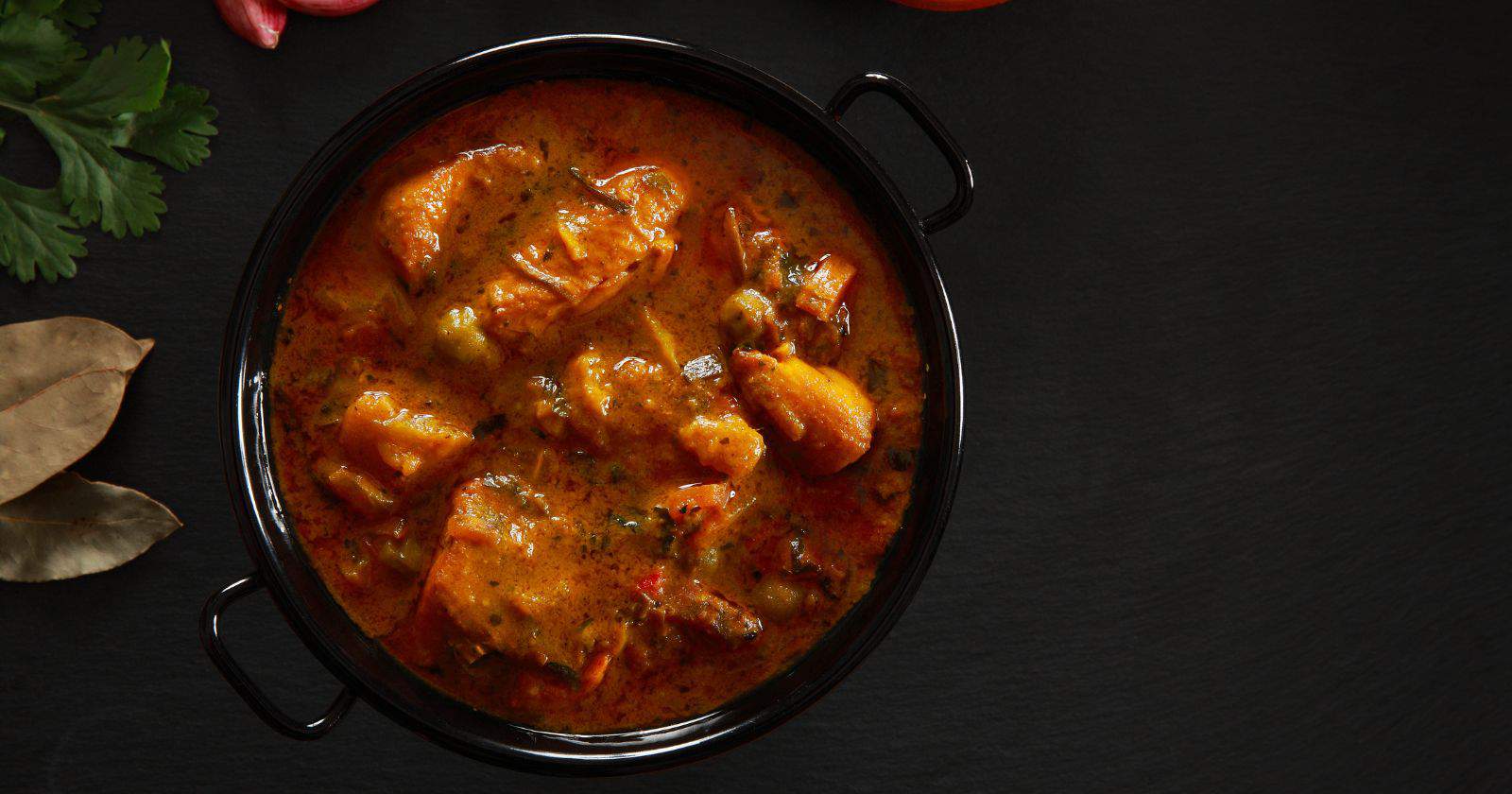Have you ever lovingly prepared a delicious curry, only to take one bite and feel your mouth set on fire? Spicy curries can certainly pack a punch, but there’s no need to panic if you’ve made one that’s just too hot to handle. With a few simple fixes, you can easily tame the heat and adjust your dish to be as mild or spicy as you desire.
The good news is that there are many clever ways to reduce the spiciness of a curry, from adding starchy veggies to stirring in dairy products. For example, potatoes and sweet potatoes work wonders at soaking up excess
It’s all about using ingredients that either dilute, neutralize, absorb, or contrast with the heat. Gradual additions and frequent tasting as you cook give you total control over the spiciness level. With a little know-how in your back pocket, you can save any mouth-burning curry and customize it to match your tastes perfectly.
In this article, you’ll discover 16 hand-picked tricks to effortlessly reduce the fiery heat in your curries. You’ll learn smart ways to temper spiciness using common kitchen staples you likely have on hand. From mellowing heat with dairy and starch to brightening with acid and aromatics, you’ll gain total confidence for making curries exactly as hot or mild as you want.
These simple, fool-proof methods work splendidly on all types of curries, from Thai red to Indian korma. Whether you love your curries fiery or mild, adjusting the spiciness will become second nature. So get ready to cool down overheated curries and whip up customized dishes to delight even the most sensitive palates!
Test and Taste Frequently
The first step to taming a spicy curry is to taste it frequently as you cook. Keep tasting and adding ingredients like dairy, starch or acid a bit at a time. After each addition, let the flavors mingle for 2-3 minutes over low heat before tasting again. This way, you can precisely control the spiciness level. Don’t wait until the end to realize it’s too hot!
Dilute with More Ingredients
One of the easiest ways to reduce spiciness is to dilute the curry with additional ingredients. Simply add more of the main elements like meat, vegetables or broth. The extra components spread out the spicy heat over a larger quantity. Potatoes, sweet potatoes and cauliflower are particularly good at absorbing excess
Add Dairy to Neutralize
Dairy products contain casein protein that binds to capsaicin and blocks its spicy effect. For Indian curries, stir in yogurt, cream or milk. For Thai curries, coconut milk does the trick. Add dairy a tablespoon at a time, simmer briefly and taste before adding more. Too much dairy can make the curry overly rich.
Toss in Starchy Foods
Starchy carbohydrates like rice, naan, pasta or potatoes soak up spicy oils effectively. Cook them right in the curry or serve as a side dish. The starch molecules trap the capsaicin compounds before they reach your tastebuds. Caution – don’t overdo the starch or the curry may become too thick.
Brighten with Acidic Ingredients
The heat of chiles is balanced out by acidic ingredients like lemon, lime, tamarind or tomato. Add a squeeze of citrus, a splash of vinegar or a tart fruit. Acidity lifts and brightens spicy flavors. However, don’t overwhelm the original curry flavors with too much acidity.
Boost Aromatics and Herbs
Fresh herbs like cilantro, basil, fenugreek, mint or dill add pleasant aromas. Saute chopped aromatics like onions, garlic, ginger and lemongrass as the curry cooks. This provides complexity, depth and balance so the spiciness doesn’t dominate.
Adjust Cooking Time and Heat
The longer a curry simmers, the more the flavors meld and soften. Letting it cook down makes it mellower. High heat intensives spiciness so cook over low or medium heat. Check after 10 minutes – taste and tweak again if needed. Don’t leave a spicy curry unattended on high heat!
Add a Sweetener
A small amount of sugar, honey, coconut milk, raisins or sweet fruit balances spiciness. Add just a pinch or spoonful at first. Sweet and spicy play off each other. However, you don’t want the curry to become a sweet dessert dish – a subtle sweet hint is all that’s needed.
Finish with Cream or Butter
For fast relief, swirl in cream, half and half or butter at the end. The fat in dairy binds to capsaicin immediately and coats your mouth. It also provides a rich, silky texture. But don’t add too much or the curry may become heavy.
Infuse Steamed Rice
For curries like jalfrezi, biryani or korma, fluffy steamed rice absorbs the excess heat. Stir the rice into the hot curry just before serving or top rice with the curry. The steam helps the grains soak up spiciness evenly. Basmati or jasmine rice work best.
Cool Your Mouth
Have a cold drink handy when eating a fiery curry. Cold milk is especially soothing. Sipping something icy cools your tastebuds between bites. Yogurt-based drinks like lassi help too. You can also numb your mouth briefly with cucumber slices.
Avoid Over-Chili’ing
Go easy on the chili peppers when first making a curry. It’s easy to add more heat but tough to reduce it. Start with half the chilies called for in a recipe then adjust up cautiously. Remove whole chiles rather than breaking them for less heat.
Use Milder Peppers
Substitute jalapenos for tiny Thai chiles or red bell peppers for spicy green chiles. Open and shake out hot seeds before adding peppers. Devein chiles by slitting and scraping out the ribs inside. Soak dried chiles to soften flavor before blending into curry paste.
Reduce Spice Blends
Many premade curry
Tweak the Curry Paste
If starting with curry paste, use less, add it later in cooking or dilute it with oil or water first. This prevents the paste from fully dispersing its concentrated heat. Or make your own curry paste with milder seasonings as the base.
Balance with Mango
Sweet mango cools spicy heat. Dice it small and stir into the curry. Or blend mango into the curry paste. Another option is mango chutney – swirl it in as a sweet, fruity counterpoint. Just a little mango balances the flavor beautifully.
So don’t be intimidated by a mouth-burning curry! With a few easy tweaks as you cook, you can adjust any curry to be as mild or spicy as you desire. Keep tasting, have patience and use these handy tricks to take control over the heat. Soon you’ll become an expert at creating perfectly personalized curries.
Frequently Asked Questions
How much dairy should I add to reduce spice ?
Start with 1-2 tablespoons of yogurt, cream, coconut milk or milk per serving. Add in small amounts, tasting after each addition, until you reach the desired spiciness level. Too much dairy can make the curry overly rich.
What’s the best way to use potatoes to reduce heat?
Cut potatoes into 1-inch cubes and simmer in the curry for 10-15 minutes until tender. For a quicker fix, boil cubed potatoes until almost done then add to the simmering curry 5 minutes before serving.
Can I use sour cream instead of yogurt?
Definitely. Sour cream contains casein proteins just like yogurt, which helps bind to capsaicin. Add it slowly and taste as you go until the curry
How does adding sugar reduce spiciness?
A tiny amount of sugar balances out spicy heat and enhances the other flavors. Add just a pinch or 1/4 tsp at first, taste, and gradually add more if needed. Be careful not to make your curry dessert-sweet.
Should I use fresh or canned coconut milk?
Either works well for cooling down curries. Canned will have a more uniform flavor while fresh may provide more brightness. Use full-fat coconut milk and add it gradually until the





